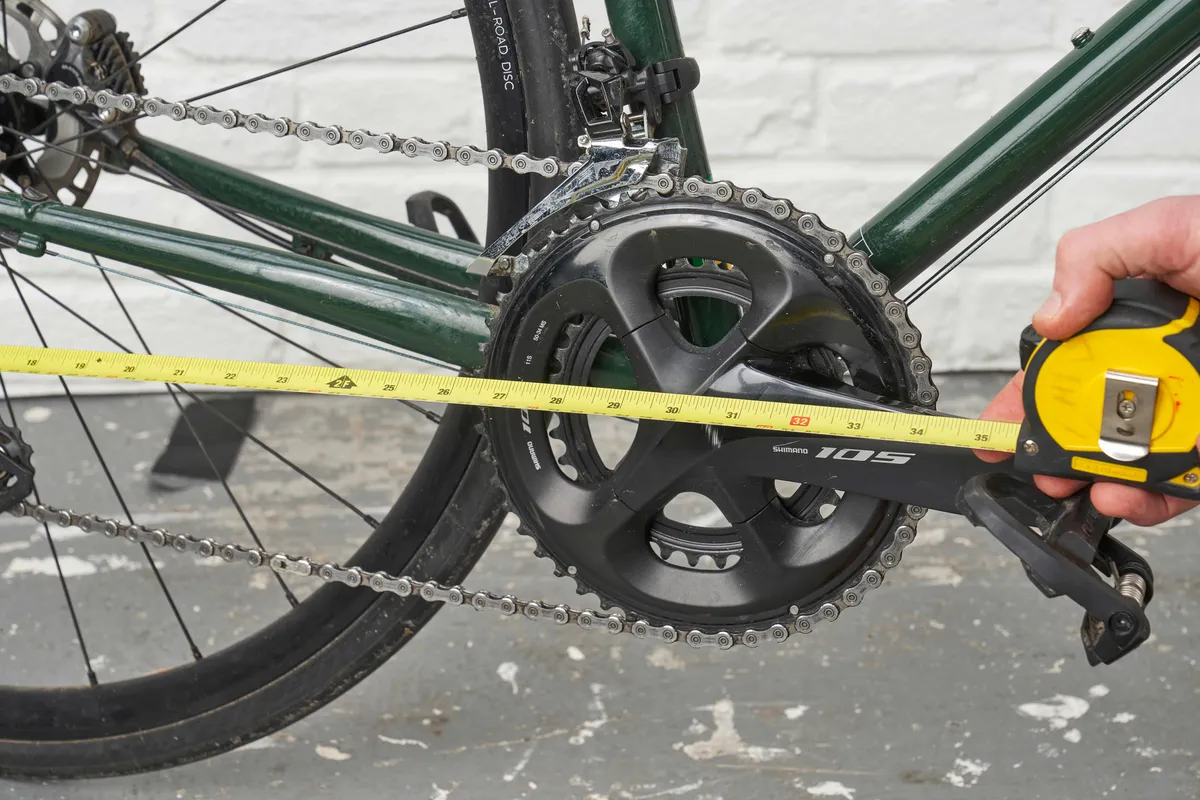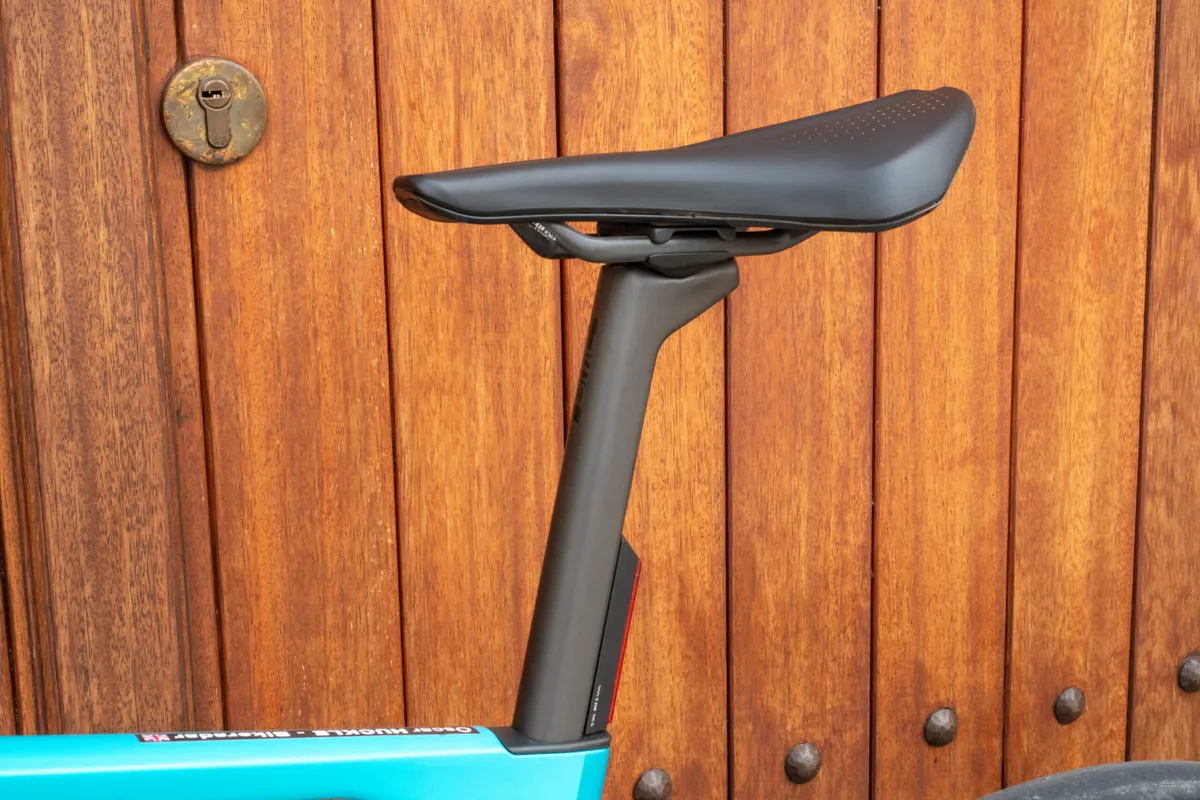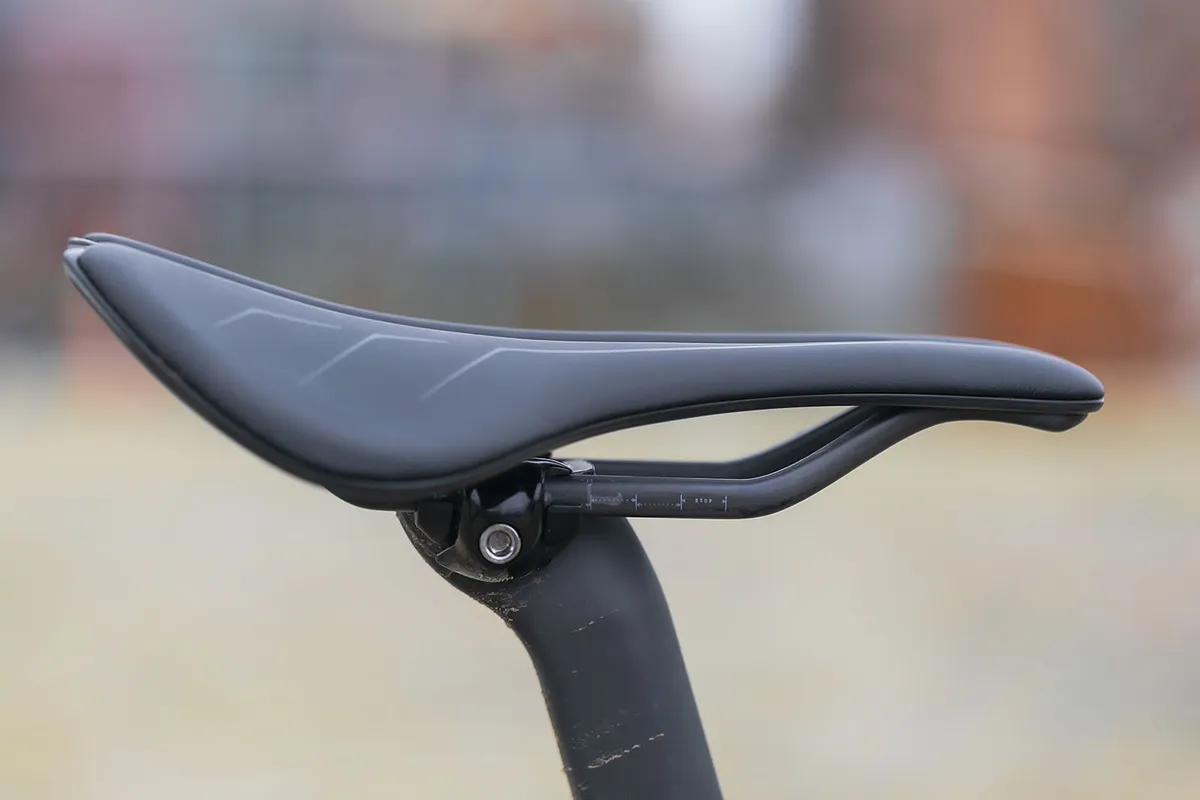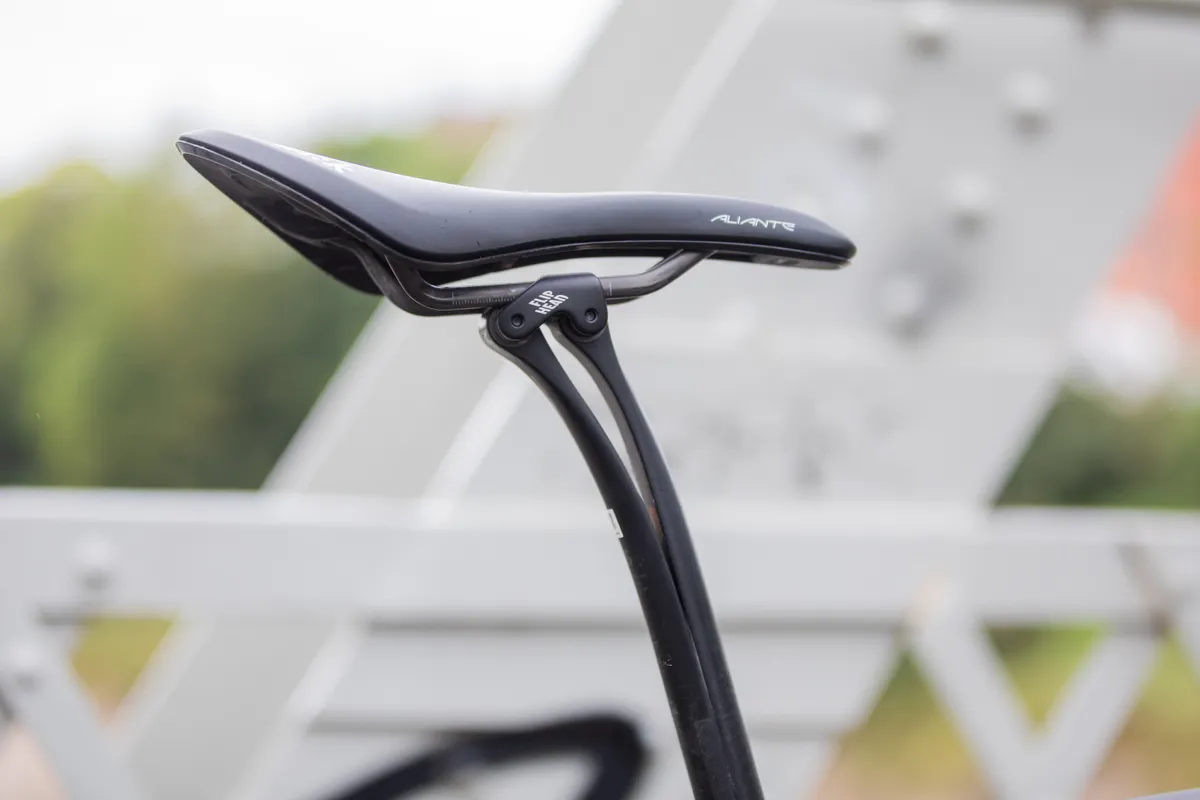Saddle setback is one of the key measurements to get right because it determines your weight distribution on the bike.
The correct amount of saddle setback will help you pedal comfortably and efficiently. But incorrect saddle setback can decrease your power output and lead to common types of pain caused by cycling.
In this guide, we'll explain why saddle setback is important, how to find the right position for you and how to adjust it on any kind of bike.
What is saddle setback?

Also known as fore and aft position, saddle setback refers to how far forwards or back your saddle is in relation to the bottom bracket.
Imagine a vertical line from the centre of the bottom bracket: increasing saddle setback moves the saddle nose away from this line; decreasing saddle setback moves the saddle nose closer.
How to measure saddle setback

To measure saddle setback, put your bike against a wall, either in a stationary trainer or with the wheel in situ. A horizontal bike workstand makes this easier.
In either case, ensure the bike is on level ground and the wheel is flush to the wall. Then, follow these steps:
- Measure from the wall to the bottom bracket
- Measure from the wall to the tip of the saddle
- Deduct the first measurement from the second to calculate saddle setback
Why is saddle setback important?

Bike fitter Dan Smith, from UK Bike Fit, says saddle setback affects how you distribute your weight on the bike.
“Think of your saddle as the seat of a seesaw: if you bring your saddle too far forward, you’ll tip your body weight towards the front of the bike and through your shoulders, hands and neck,” he says.
If you move the saddle back, the opposite happens.

“You put more weight over the back wheel and take weight off your hands,” he adds.
“It's about finding that balancing point between the two, where you can sit on the centre of the seesaw.
“You want to have minimal weight going through the hands and as little weight as possible going through the saddle, so you're nice and balanced over the bike.”

You’ll often see men’s WorldTour riders and women’s WorldTour riders with their saddle far forwards, especially in time trials.
This puts power-generating muscles, such as the quads, right over the pedal axle. In this position, many cyclists can produce more power and be more aerodynamic.
Handling can also be more precise with less saddle setback, as long as you’re not so far forwards you feel you're tipping over the bar.
Pros can’t go as far forwards as they want though. UCI regulations stipulate that the tip of the saddle nose has to be at least 5cm behind the bottom bracket.
But even if you’re not subject to UCI rules, you might not want to slam your saddle far forwards.
Saddle too forwards

Bike fitter and physio Bianca Broadbent says: “If the saddle is too far forward, you put more pressure on your hands.”
As a result, you might experience hand and neck pain.
Decreasing saddle setback can also lead to knee pain.
By moving your saddle forward, Smith says: “You've effectively lowered your saddle height, so you’re bending your knee more which makes you more quad-heavy.”
Overworked quads can cause pain at the front of the knee.
Saddle too far back

Moving your saddle back effectively increases saddle height, so can trigger similar problems as running your bike seat too high.
Broadbent, from Fit Your Bike, says riding a saddle that’s too far back can increase internal rotation of the knee and hip adduction. This can compress the IT band, a potential cause of hip and IT band pain.
How to find the right saddle setback for you

Saddle setback is individual. It’s influenced by factors including your stature, bike geometry and riding style.
Smith says two riders with identical body dimensions will require different saddle setback if one has a lower position on the bike.
“The person who rolls their pelvis forward and has a more aggressive position will put more weight further forward,” he says.
“So then you might want to slide the saddle a little bit further back.”

The opposite is true if a person rides more upright.
Smith says: “They’d put more weight towards the rear of the bike, so you might need to slide the saddle forwards to redistribute their weight over the bike.”
If you’re in doubt about how much saddle setback you require, we advise getting a professional bike fit.
Saddle setback and handlebar reach

Saddle setback influences reach because sliding your saddle back moves you further away from the handlebar.
But Smith says it’s crucial to isolate these measurements when doing a DIY bike fit or sorting your mountain bike position.
He says: “You should never think: ‘My reach is too long, I’ll move my saddle forward’.”
You should change your saddle position to influence your pedal stroke and your weight distribution, for example, but not reach.
Smith adds: “If your reach is too long and your saddle is set right, just shorten the stem or bars.
“You should never compromise your saddle position for your upper body.
“You’ll create problems elsewhere with your pedal stroke, saddle pressure, saddle height and cleat position.”
How to adjust saddle setback
Adjusting your saddle setback is a simple job. All you’ll need is an Allen key, probably 5mm.
- If your seatpost head has a two-bolt clamp, you’ll need to loosen both bolts to move the saddle – a couple of turns anticlockwise should do it
- On a one-bolt clamp, you’ll only need to loosen one bolt
- After writing down or photographing your starting point, slide the saddle forwards to decrease setback and backwards to increase it
- Start small and don’t exceed the manufacturer’s adjustment limits, usually indicated by a bold white line and the word ‘max’
- If you’re already happy with your saddle angle, try to keep the tilt of the saddle the same and move it horizontally
- After finishing your adjustments, tighten the bolt(s) and consider using a torque wrench to be sure
- Bear in mind that you might need to change your saddle height and cleat position too
The type of saddle and seatpost you have will limit to what degree you can change your fore and aft position.
Short-nose saddles can have shorter rails than traditional saddles. This gives you less room for adjustment forwards and backwards.

Mountain bike seatposts tend to be ‘zero-offset’ or ‘zero-setback’. The seatpost head is in line with the shaft, so you can position your saddle far forwards but not that far back.
However, road and gravel riders can choose from zero-offset/setback and setback seatposts. On these, the seatpost head is offset from the post, usually by 15mm. Sometimes, it is adjustable by 15-35mm, for example.
Therefore, a setback seatpost limits how far forwards you can run your saddle relative to the bottom bracket.

